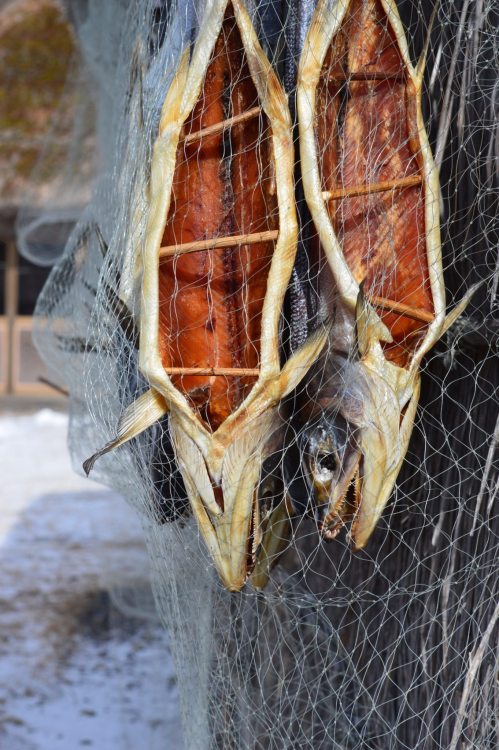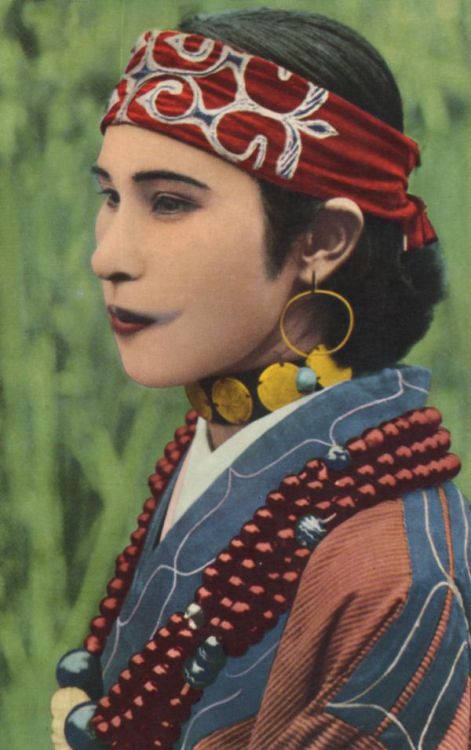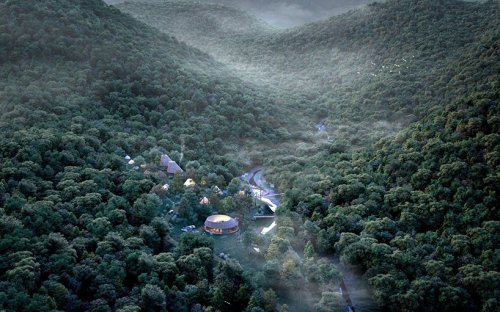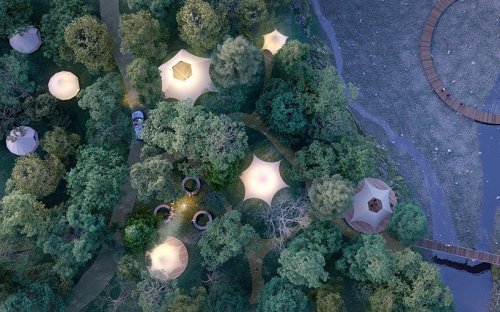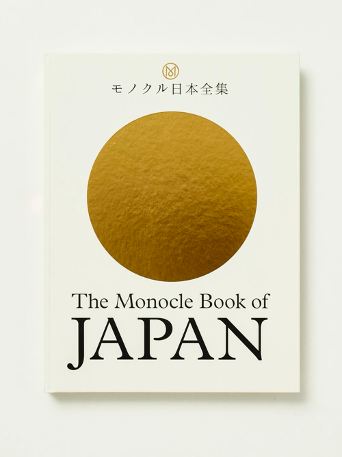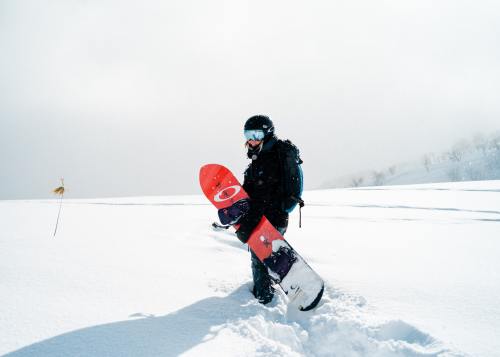#travel
En donde solo las alas que me das son las que me hacen volar alto o caer hasta el fondo.
#butterfly #morphos #bluemorpho #animalplanet #wildlife #animals #nature #bestphoto #photography #travel #outdoors #adventure #bbctravel #bbcearth #bbc #natgeo #natgeowild #natgeotravel #natgeoadventure #discovery #memes
Post link
En donde solo las alas que me das son las que me hacen volar alto o caer hasta el fondo.
#butterfly #morphos #bluemorpho #animalplanet #wildlife #animals #nature #bestphoto #photography #travel #outdoors #adventure #bbctravel #bbcearth #bbc #natgeo #natgeowild #natgeotravel #natgeoadventure #discovery (at La Fortuna, Alajuela, Costa Rica)
Post link
Miro atrás y observó la larga senda que he recorrido hasta hoy.
#wallaby #kangaroo #animals #wildlife #nature #documentary #photography #bestphoto #adventure #outdoors #travel #discovery #natgeo #natgeowild #natgeotravel #natgeoadventure #bbc #bbcearth #bbctravel #animalplanet #memes
Post link
Miro atrás y observó la larga senda que he recorrido hasta hoy.
#wallaby #kangaroo #animals #wildlife #nature #documentary #photography #bestphoto #adventure #outdoors #travel #discovery #natgeo #natgeowild #natgeotravel #natgeoadventure #bbc #bbcearth #bbctravel #animalplanet (at Rockhampton, Queensland)
Post link
Serás tú quien encienda la luz que me guíe a la serenidad.
#lighthouse #cape #sunset #coastside #beach #sea #bestphoto #documentary #photography #travel #outdoors #adventure #landscape #natgeo #natgeowild #natgeotravel #natgeoadventure #bbc #bbcearth #bbctravel #discovery #memes
Post link
Serás tú quien encienda la luz que me guíe a la serenidad.
#lighthouse #cape #sunset #coastside #beach #sea #bestphoto #documentary #photography #travel #outdoors #adventure #landscape #natgeo #natgeowild #natgeotravel #natgeoadventure #bbc #bbcearth #bbctravel #discovery (at Cape Palliser Lighthouse)
Post link
Inspiro terror, pero mi postura es temor a la humanidad.
#rattlesnake #snakes #wildlife #nature #closeup #poison #travel #adventure #life #discovery #natgeo #natgeowild #natgeotravel #bbc #bbcearth #bbctravel #animalplanet #photography #documentary #bestphoto #memes
Post link
Inspiro terror, pero mi postura es temor a la humanidad.
#rattlesnake #snakes #wildlife #nature #closeup #poison #travel #adventure #life #discovery #natgeo #natgeowild #natgeotravel #bbc #bbcearth #bbctravel #animalplanet #photography #documentary #bestphoto (at Sierra de Quila)
Post link
DISCOVER: Crowd Cloud
Haneda Airport hosts Crowd Cloud, an installation of huge horns conversing with each other to symbolize people waiting for friends and relatives. Created by sound artist and designer Yuri Suzuki and musical artist and composer Miyu Hosoi, the work fills the air with musical renditions of the Japanese language, created by Hosoi sampling around 7,000 hiragana files using her own voice.
Crowd Cloud is part of CULTURE GATE to JAPAN a new contemporary art exhibition to showcase Japan’s regional diversity. Taking place at seven Japanese airports until September 2021, this exhibition can also be explored online.
Image credit: Crowd Cloud (2021) by Yuri Suzuki and Miyu Hosoi. Photo by Takashi Kawashima
Post link
EAT: With the Ainu
Native to Japan’s northernmost island, Hokkaido, the world’s few remaining Ainu people protect an ancient culture, unique to this small corner of the globe. Hunter-gatherers by tradition with a deep reverence for nature, traditional Ainu food is a direct product of Hokkaido’s bountiful landscape.
Read on to discover Japan’s indigenous cuisine.
You’d be forgiven for not having heard of Ainu culture, let alone their food, yet the Ainu people have been residents of Japan’s northern tip for many thousands of years. Today, the Ainu’s diminishing population work hard to preserve their distinct heritage, including a unique food culture that can be credited for influencing many of Japan’s most famous dishes.

Unlike the Japanese who practiced rice farming, the Ainu traditionally hunted, foraged and fished for food, living off the land with a nutrient-rich diet that had a lasting impact on Japanese cuisine. Umami, for example, Japan’s infamous ‘fifth taste’ has its roots in Ainu cooking. Found in fermented foods such as miso and soy, umami is widely associated with Japanese cuisine, yet it can in fact be traced back to the Ainu’s use of kombu – an edible sea kelp which grows in abundance off the coast of Hokkaido. Kombu was adopted directly from Ainu cuisine and is today one of the most prevalent ingredients in Japanese cooking. It even forms the base for dashi– an umami-rich broth and one of Japan’s culinary cornerstones.

The Ainu practice animism, cultivating a deep connection with the natural world. This intrinsic respect for nature forms the foundation of Ainu cooking, and whilst Hokkaido today is best known for fresh seafood and dairy produce, the Ainu ate bear, deer and salmon, foraging wild plants, berries and grasses in-tune with the changing seasons. Living in harmony with the surrounding landscape, the Ainu would only eat what could be found locally, and never over-fished, foraged or hunted, protecting their future by eating sustainably.
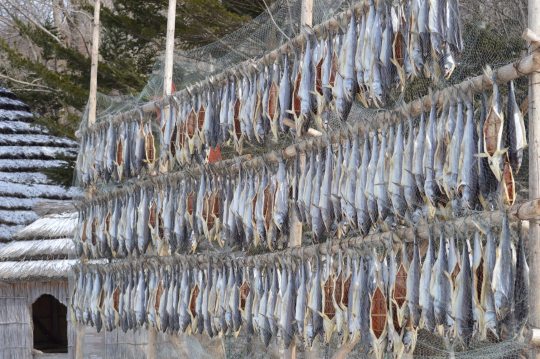
Another key distinction between traditional Ainu cuisine and Japanese cooking is that fish or meat is rarely eaten raw, meaning sushi and sashimi are firmly off the menu. Instead, fish or animal meat is boiled into a soup, roasted or dried and preserved to provide food through the winter months. Traditionally, the fish skins and animal hides would then be used to make clothing.

Today the Ainu’s simple, sustainable, super-food rich cuisine is mainly eaten in private homes, though there are a small number of restaurants and cooking schools championing Ainu fare. In Sapporo, Ainu chef Hiroaki Kon opened Kerapirka in 2019 – one of the few Ainu restaurants in the world. In Tokyo, too, Ainu dishes are making their way onto restaurant menus, for examples at Michelin-starred restaurant L’Effervescence lead by chef Shinobu Namae, who aims to give Japan’s indigenous food the recognition it deserves.
Images:Laura Liverani via the Guardian
Post link
SEE: Ronny Behnert’s Floating Torii
In 2019, German photographer Ronny Behnert travelled the length of Japan photographing traditional Torrii gates. Despite capturing some of Japan’s most photographed landscapes, the resulting series won Behnert first prize in the Sony World Photography Awards, 2020.
Using an involved process that combines neutral density filters and long-exposure times to carefully control the light, Behnert’s otherworldly portraits capture Japan’s Torii gates like never before. Pictured in sharp focus against a bleached-out backdrop of hazy greys, Behnert’s Torii appear to float – hanging in mid-air or cast out to sea, anchored in a tiny slice of land. Isolated like this, the significance of Japan’s iconic gateways are more keenly felt as sacred portals to the spiritual realm.
For more of Behnert’s atmospheric travel photography, find him on Instagram
Images:Ronny Behnert
Post link
DISCOVER: the Ainu of Hokkaido
Living on the northernmost and southernmost islands of the country’s archipelago, two distinct cultures form Japan’s indigenous population. In the far south, tropical Okinawa is home to the Ryūkyūans, whilst snowy Hokkaido at Japan’s northern tip is Ainu territory.
The earliest settlers of northern Japan and Russia’s Sakhalin and Kuril Islands, you’d be forgiven for having never heard of the Ainu people. Official estimates place the Ainu population of Japan at 25,000 but Ainu culture remains largely unknown, even in Japan. In 2008 the Ainu were formally acknowledged by the Japanese government as “an indigenous people with a distinct language, religion and culture”. Today, Hokkaido’s native community continue to work hard to preserve their distinct heritage through traditional craft, language and cultural practices.
Read on for an introduction to the hidden people of Hokkaido.
Images: via tmurrayarts.com

Hunter Gatherers
The Ainu were traditionally hunter-gatherers. Hokkaido, known as Ainu Moshiri, or ‘land of the Ainu’ provided a bountiful landscape for hunting, foraging and fishing. Using bows, arrows and poisoned spears, the Ainu lived off the land until emigration of the Japanese from mainland Japan displaced the indigenous population, forcing them into agriculture.
Image:Laura Liverani via the Guardian
An Endangered Language
The language of the Ainu people is classed as a ‘language isolate’, meaning it is completely unique, unrelated to any other. Critically endangered, the number of native speakers is estimated at just 10, yet despite nearing extinction, there is a movement to revitalise the language and the number of second-language learners is increasing, particularly in Hokkaido. The Ainu language has had no indigenous system of writing, making the Ainu masters of narration. Using the classic Ainu language of the Yukar, or ‘epic stories’, tales were committed to memory and related at gatherings which often lasted many hours or even days.

Sacred Bears
The Ainu worship nature and practice animism – a belief in multiple spirits capable of helping or harming human interests. The Ainu believe that all animals are the manifestation of gods on earth, but whilst there are many gods in Ainu belief, the most important is known as Kim-un Kamuy – the god of bears and mountains. In Ainu culture the bear is considered sacred, informing their most important ritual known aslotame. Having treated the bear well in life, the Ainu believed that in death its spirit would ensure the wellbeing of the community.
Image: via kirokomade.com

Hair and Tattoos
One of the most distinctive physical features of the Ainu people were the men’s long hair and tattoos worn by the women around their mouths. Never shaving after a certain age, Ainu men kept thick beards and shoulder-length hair. A custom for facial tattoos signified the coming of age amongst Ainu women, using black soot to mark around their mouths, starting with a small dot on the upper lip which grew as a girl approached womanhood.
Image: Via BBC.com
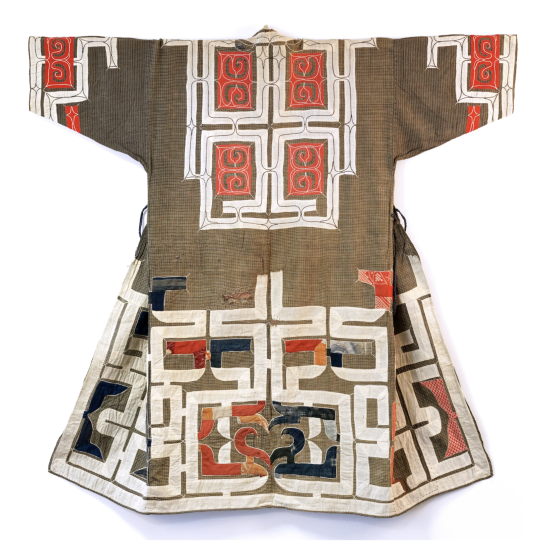
Clothing
Traditional Ainu clothing is made from Nibutani ‘bark cloth’, woven using attush – fibres spun from the inner bark of elm trees growing near the Saru River. Featuring distinctive applique patterns, kimono-style robes were made by Ainu women, each unique garment designed with the intended wearer in mind. Ornamental jewellery and headdresses are also key to traditional Ainu attire, most notably theSapanpe – a wooden crown featuring carvings of animal gods worn by men during important ceremonies.
Image: kimono via Helmn
Post link
DO: Keep Warm in a Hot Mountain Spring
Hokkaido, Japan’s coldest, wildest prefecture is home to fewer people per square kilometre than anywhere else in the country. Sandwiched between Honshu’s northern tip and Russia’s frozen Kamchatka Peninsula, Hokkaido’s rugged landscape, dramatic climate and abundant wildlife makes it a mecca for outdoor enthusiasts.
Winter is peak season in Hokkaido, when icy Siberian winds lay a thick blanket of snow over the island. Some of the world’s best terrain for winter sports attracts hordes of visitors to the mountains, where snow-laden scenery and the region’s famous geothermal springs promise full nature immersion.
Read on to discover three of Hokkaido’s best mountain onsen, where snowy surrounds and far-reaching views come top of the list.
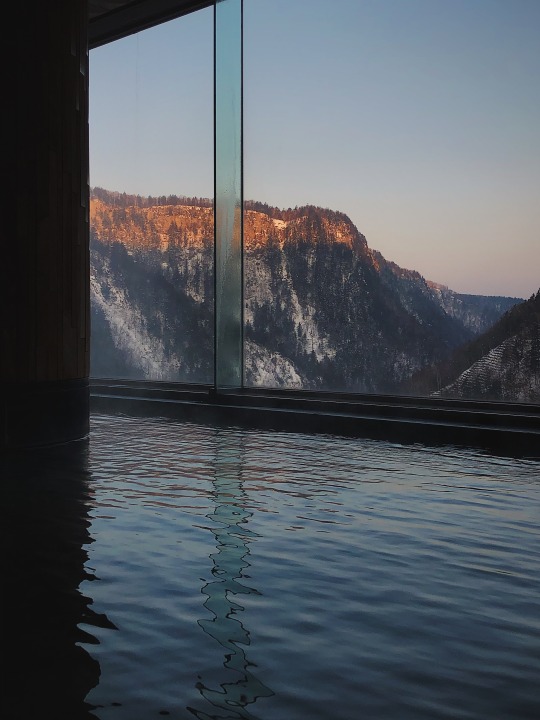
1. For jaw-dropping scenery: Sounkyo Onsen
For those willing to travel the extra miles, Sounkyo Onsen is a small hot spring resort deep in the heart of Daisetsuzan national park. Nestled amongst thickly forested peaks with dramatic views of the steep gorge carved by the Ishikari River, the thermal baths at Sounkyo Onsen are some of Japan’s most scenic.
Successfully fusing Japanese tradition and contemporary convenience, Sounkyo Onsen is home to a hot spring to suit all preferences. If you’re looking for authenticity, head to Kurodake No Yu, the town’s oldest and most famous bath house, who’s outdoor onsen boasts expansive views of the Sounkyo Valley. For the best facilities, Sounkyo Kankou Hotel is home to a variety of indoor and outdoor baths, with their dramatic ‘Utari’ bath being built from pillars of local rock, overlooking a waterfall. But if it’s views you’re after, you can’t beat the baths at Hotel Taisetsu. Perched on a cliff-edge overlooking the town, the hotel’s outdoor baths offer one of Hokkaido’s most unique winter experiences – breath-taking mountain scenery whilst immersed in the island’s restorative mineral-rich water.
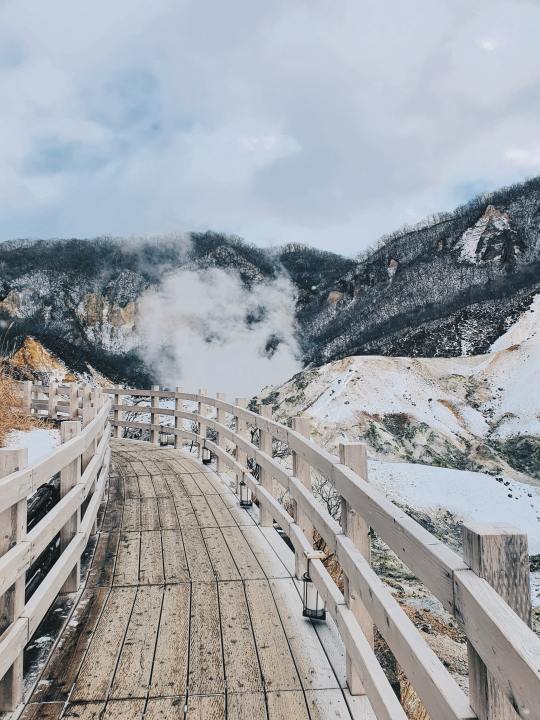
2. For head-to-toe restoration: Noboribetsu Onsen
Whilst Sounkyo Onsen is a lesser-known local gem, Noboribetsu Onsen, on the coast just south of Sapporo, is one of Japan’s most famous. What the spa town lacks in picturesque scenery it makes up for in sheer drama, with Noboribetsu’s medicinal water flowing from a blasted volcanic crater known as Jigokudani, or ‘Hell Valley’.
Hot, desolate and reeking of sulphur, Jigokudani’s smoking vents and boiling lakes produce an incredible eleven types of mineral water, making the thermal baths at Noboribetsu a therapeutic experience like no other. Each variety comes with a promise of its own medicinal benefits, meaning you can choose your bath based on your health needs, whether that’s salt for circulation or iron for anaemia. Add to that the fact that Noboribetsu is also a convenient hour-and-a-half hop from world-class ski resort Niseko, and you have one of Japan’s best spots for winter rest and relaxation.

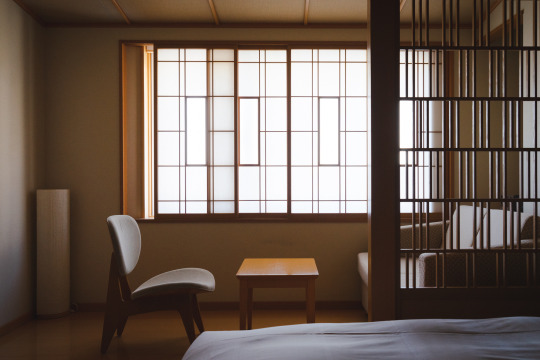
3. For authenticity: Jozankei Onsen
A short drive from Sapporo on the northern edge of Shikotsu-Toya National park, Jozankei Onsen is amongst Japan’s most historic hot spring resorts. Unlike Noboribetsu Onsen, the thermal baths at Jozankei are less familiar to foreign visitors, offering the chance to experience Hokkaido’s hot springs as the locals do.
With a history of over 150 years, Jozankei Onsen is one of Hokkaido’s spa towns, tempting visitors to the mountains with the promise of clean air, grand vistas and restorative waters. Extremely popular amongst locals, Jozankei Onsen is home to a vast number of baths, many of them outdoor with magnificent views of the surrounding peaks or the Toyohira River canyon. If you’re short on time, Jozankei is conveniently located for Sapporo day-trippers and many of the hotels offer spa entrance for day visitors. But for total relaxation and immersion in Hokkaido culture, book into one of the town’s traditional ryokan for an overnight stay.
Images: Alex Rebbeck for ANA, Ian Lai via Unsplash
Post link
STAY: At Japan’s Newest Glamping Site
As camping comes to the fore as our socially-distanced holiday of choice, Danish studio Third Nature have revealed plans for a fantastical, design-lead campground just outside Japan’s city of Inabe, Mie Prefecture.
Hidden amidst the trees, Third Nature plan to construct a dream-like cluster of sustainably-built cabins, with wooden walls and wonky pitched roofs lifted straight from the pages of a fairy tale. Playfully coined ‘Hygge Circles’, Japanese engineers and sustainability consultants worked with the Scandinavian design studio to conceive a low-impact development that marks a shift towards regenerative tourism.
Set to open in the spring of 2021, Hygge Circles will join a crop of luxury campsites springing up across Japan, tapping into the nation’s inherent love of nature, without sacrificing everyday comforts.
Images via Design Boom
Related read:STAY: In a Rural Conservation Project
Post link
DO: Dive into Monocle’s Book of Japan
The culmination of years of research and reporting across the country, the team at Monocle Tokyo have delivered what might just be the ultimate guide to japan. Weighty, densely packed and beautifully produced, The Monocle Book of Japan is a bookshelf essential for anyone planning a trip, or simply curious to delve deeper into Japan’s fathomless culture. A second-to-none insight into the people, places and products that define the nation, Monocle unpack one of the world’s most fascinating countries in a way that will have you page-turning for hours on end.
Secure your copy at the Monocle Shop
Image:Monocle
Post link
SEE: The Harvest Moon
As the temperature drops and Japan’s famous maple leaves burst into colour, Tsukimi, or ‘moon viewing’ sees friends and family gather in celebration, honouring the beauty of the mid-autumn moon.
A centuries-old tradition, Tsukimi is thought to have originated during the Heian Period when Japanese aristocrats would gather to recite poetry under the eighth full moon of the solar calendar. Today, celebrations are less cerebral and more food-focussed, with festivalgoers honouring the harvest moon with edible offerings – seasonal dishes known collectively as tsukimi ryōri. Gathering under the stars, decorations made from Japanese pampas grass set the scene for enjoying rice dumplings (known as Tsukimi dango), taro, edamame, chestnuts and of course, sake – praying for an abundant harvest under the bright light of the moon.
Image: Alexis Antonio via Unsplash
Post link
DO: Ski Off-The-Beaten-Track
It’s no secret that Japan is home to some of the best skiing in the world. But whilst fair-weather skiers flock to big-name resorts, the more adventurous trek off the beaten track, rewarded by untouched slopes and the deepest, smoothest powder on the planet.
Read on for three of Japan’s best spots for back-country skiing.
Hakkoda, Aomori Prefecture
On the northern tip of mainland Japan, just south of Aomori City, eight powder-coated peaks make up what is widely considered the holy grail of Japan’s backcountry skiing. Not so much a ski resort as an off-piste playground, Hakkoda is home to only two marked courses, with the remainder of the mountain range reserved for exploring out-of-bounds.
Serviced only by the Hakkoda Ropeway and a handful of two-man chair lifts, Hakkoda is for advanced skiers and boarders only. Dotted with Japan’s famous Juhyo or ‘snow monsters’, no terrain is off-limits and those willing to make their own way down the mountain will be rewarded endless fresh tracks through one of the world’s most spectacular and surreal snowscapes. A circular road encompassing the mountain range makes arranging pick-up easy, though skiing with a guide and proper safety equipment is highly recommended.
Getting there: Hakkoda is best reached via Aomori, 3.5 hours north of Tokyo by train. From Aomori, travel an hour south-east by road – either by hire car, taxi, or one of several buses running from either of the city’s central stations.
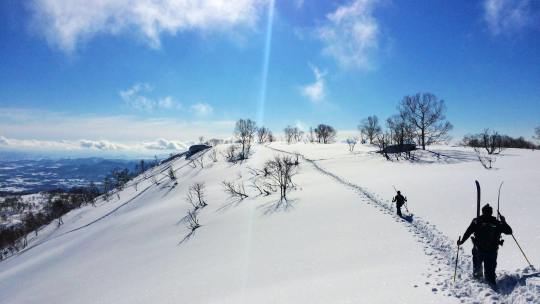
Asahidake and Kuradake, Hokkaido Prefecture
Deep in the heart of Japan’s largest and wildest national park, the Daisetsuzan Mountain Range boasts some of the best-quality snow in Japan. Siberian winds crossing the Sea of Japan lay vast blankets of thick, fresh snow throughout the winter months, making Daisetsuzan National Park a mecca for powderhounds and backcountry thrill-seekers.
Whilst Hokkaido is home to some of Japan’s best-known resorts, those looking to ski off-the-beaten-track head to Asahidake and Kuradake. Small on infrastructure, big on untouched slopes, both regions are serviced primarily by a single ropeway - ferrying visitors part way up the mountain from where they’re left largely to their own devices. Whilst this may sound terrifying to most, to those willing to trek the remainder of the way to the summit, equipment in hand, Daisetsuzan’s stripped-back ski regions promise some of the best rides of their lives.
Getting there: Daisetsuzan National Park is approximately 2.5 hours north of Sapporo and only accessible by road. Whilst buses run to both Asahidake and Kuradake, they are limited and slow, so car hire is highly recommended – though be sure to ask for a vehicle prepped to take on Hokkaido’s icy roads.
INSERT VIDEO: https://www.youtube.com/watch?v=Lq9ygwoofTc
Tanigawadake Tenjindaira, Gunma Prefecture
A string of mountain ranges across central Honshu offer Japan’s most easily accessible skiing, within striking distance of both Tokyo and Kyoto. Whilst a vast selection of well-serviced resorts offer fair-weather skiing to satisfy the majority of visitors, those in search of backcountry thrills should head to Tanigawadake Tenjindaira Snow Resort, or ‘Tenjin’ to locals. On the border of Gumna and Nigata Prefectures, serviced by the Tanigawadake Ropeway, Tenjin promises knee-deep powder and acres of off-piste terrain without travelling to the far north of Japan.
Like all of the best backcountry ski regions, there are only a handful of official courses and even fewer lifts. The rest of the mountain is free to explore, and true experts can hike beyond the resort to the big terrain beyond. But be warned, Tenjin’s off-piste is not for the faint-hearted, and with the risk of avalanche a genuine threat, a guide, the correct equipment and necessary level of skill are essential.
Getting there: Tenjin Ski Resort is located deep in the Joetsu National Park, 40km by road southeast of Yuzawa. The best way to get there is by train – Doai station is located just 1.5km from the Tanigawadake Ropeway, and is accessible from any major city. Alternatively, take one of the buses which run from Minakami train station, 25 minutes away.
Images: Alex Rebbeck for ANA
Post link













